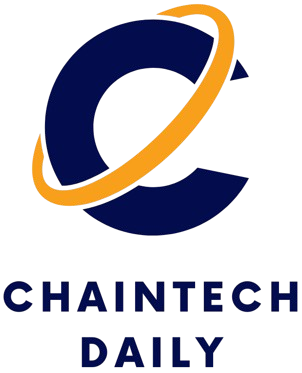Memecoins, fixed-rate DeFi, and tokenization — are they the future of finance or just overhyped trends?
Charles St. Louis, CEO of Texas-based DELV, has spent over a decade shaping the DeFi landscape, specializing in fixed-rate lending, tokenized real-world assets, and governance. In this wide-ranging discussion, he unpacks the reality behind the hype, from memecoins as onboarding tools to how tokenization is transforming investment structures.
Read on for St. Louis’ take on DeFi governance, regulatory shifts, and the Trump administration’s evolving crypto stance.
Memecoin critics cite high trading risks, extreme volatility and pump-and-dump schemes. What’s your take?
Memecoins are exactly what the word suggests: memes. They have no underlying utility, revenue model, or long-term fundamentals. You’re buying into a trend, hoping it gains attention, and that’s about it. Unlike structured DeFi tokens like Maker or Morpho, which have actual revenue-generating mechanisms, memecoins are purely speculative. That being said, there is a silver lining. Memecoins bring more people into the crypto space. They act as an onboarding tool, exposing retail investors to digital assets. The hope is that once they engage with crypto through memecoins, they start exploring more substantive financial alternatives. But, that assumes their experience with memecoins doesn’t leave them jaded about the real values made available through DeFi.
Regarding fixed-rate DeFi products: Wouldn’t a lending model like that become unsustainable if the underlying assets or collateral lose value suddenly? Pretend I’m a borrower. Why shouldn’t I worry?
We’ve built two core fixed-rate products at DELV. The first is fixed-rate yield, which functions in some ways like zero-coupon bonds. Users buy crypto at a discount, and it matures to full value over time. Say, buying 0.95 ETH and watching it grow into 1 ETH. This is ideal for passive investors who want predictable returns without actively managing volatility.
The second product is fixed-rate borrowing. Hyperdrive allows us to effectively create fixed-rate versions of existing variable-rate borrowing markets, like those on Morpho or Spark. This is crucial for institutions that require stability.
As for risk, most DeFi borrowing is overcollateralized, meaning users must put up $150 to borrow $100. This makes defaults far less likely than in traditional finance, where undercollateralized loans are common. The real challenge in DeFi borrowing is digital identity and reputation, without credit scoring, there’s no way to assess borrower reliability. Until that’s solved, overcollateralization remains necessary for risk management.

Are any companies at the forefront of tokenizing real-world assets (RWAs)? It seems like there is a lot of talk but no implementation.
Tokenization is a game-changer because it removes the inefficiencies of traditional financial markets. Instead of slow, paper-based processes, assets like real estate and treasury bills (T-bills) can be tokenized and traded on-chain instantly and 24/7/365. This not only increases liquidity but also expands access to global investors. For example, manufacturers can tokenize their real estate assets and borrow against them in real time, eliminating the need for slow bank approvals. Similarly, tokenized T-bills allow anyone with an internet connection to invest in government debt without a broker. It’s about accessibility and efficiency. There’s a lot of talk about RWAs, and while we’re still in the early days, we’re seeing serious adoption. Franklin Templeton, BlackRock, and JPMorgan are moving into tokenized securities. Ondo Finance is bridging DeFi capital to RWAs, and Maple Finance is focusing on on-chain credit markets.
What’s next for DeFi governance as regulatory clarity increases?
Many teams launched DAOs too early, giving full control to token holders before proper infrastructure was in place. This led to inefficiencies, voter apathy, and governance attacks. Regulatory clarity is allowing for a more structured approach. The U.S. is beginning to recognize ‘safe harbor’ provisions (at least in spirit), meaning teams will be able to gradually transition control to DAOs instead of decentralizing overnight. This will lead to more sustainable governance models. Additionally, legal wrappers for DAOs are becoming more common, allowing them to operate as structured businesses. Right now, many DAOs can struggle to manage massive treasuries in a way that adheres to tax compliance or accountability concerns. That’s going to change as regulatory clarity improves.
Trump is certainly loosening regulations around crypto. Are there any issues you feel deserve more attention?
Trump has taken a more hands-off approach to crypto regulation while he gives time for relevant agencies to develop thoughtful approaches that constructively advance their core missions, which has been positive for innovation. His policies of reducing regulation by enforcement (such as with the U.S. Securities and Exchange Commission) and pushing for a national Bitcoin reserve have definitely brought attention to the market.
However, more attention could be — and likely will be — given to stablecoin and real-world assets and how they’re regulated. While Bitcoin’s value cannot be denied, it has also become a buzzword that overshadows stablecoins and tokenized assets, which are more likely to serve as foundational building blocks for institutions.


